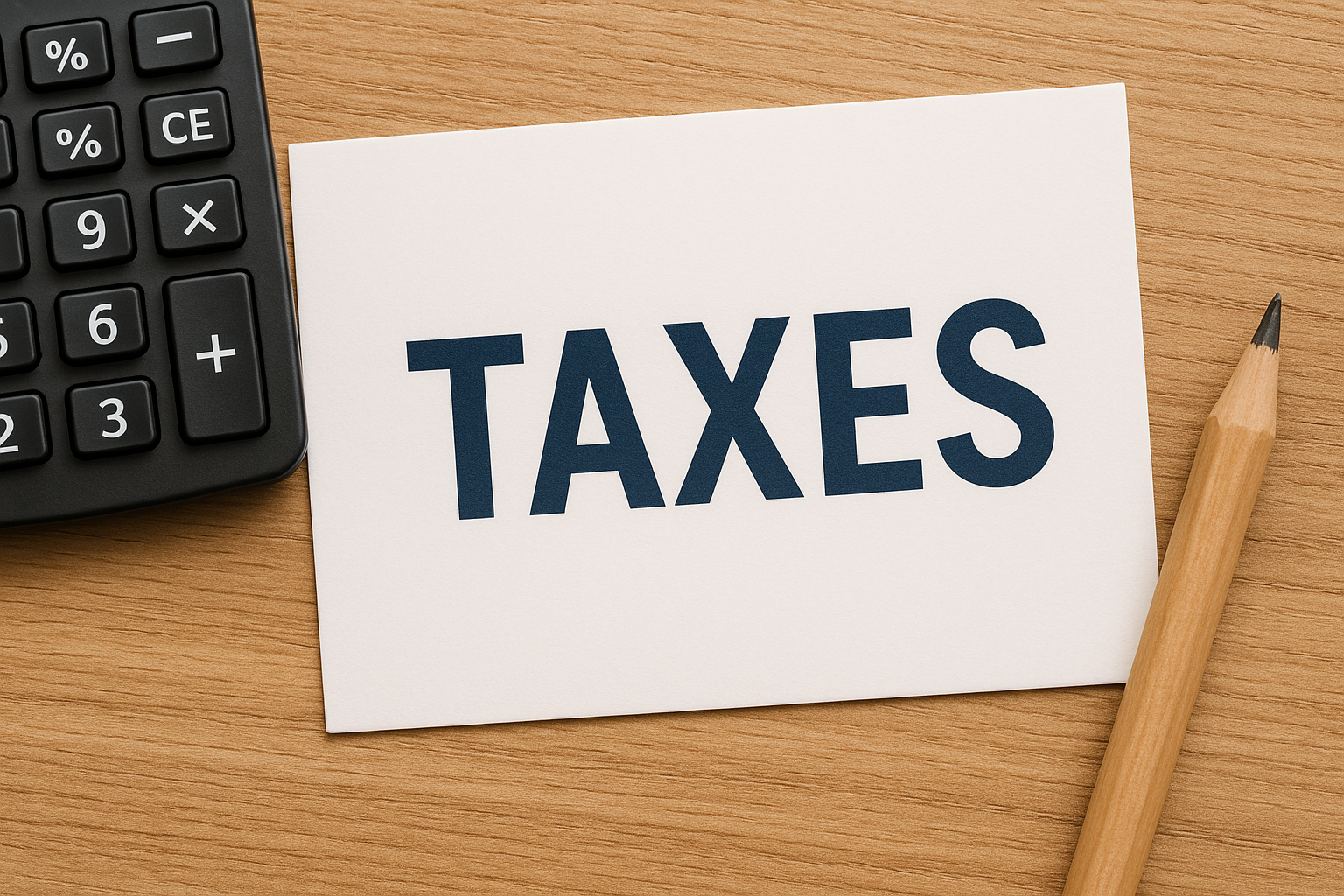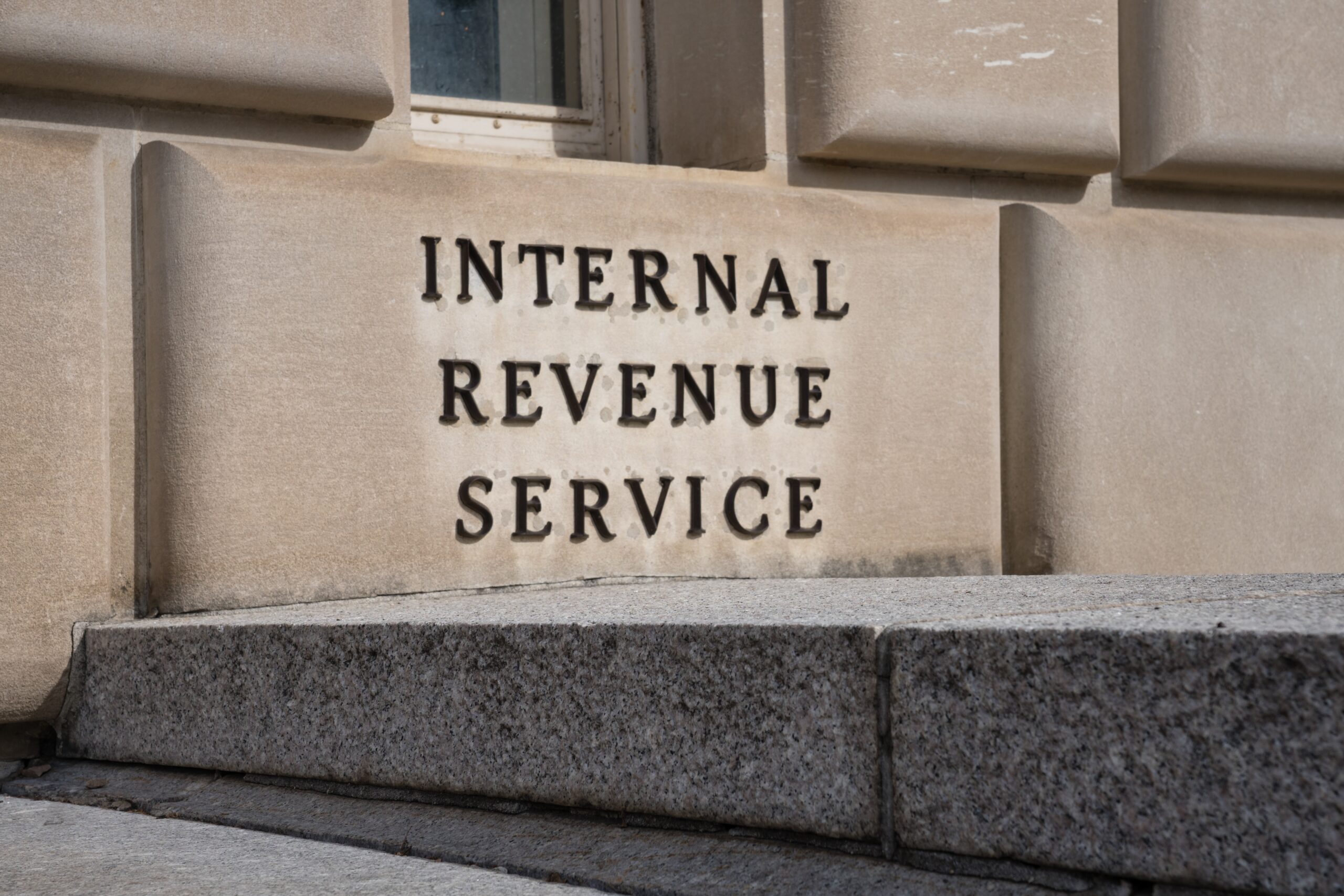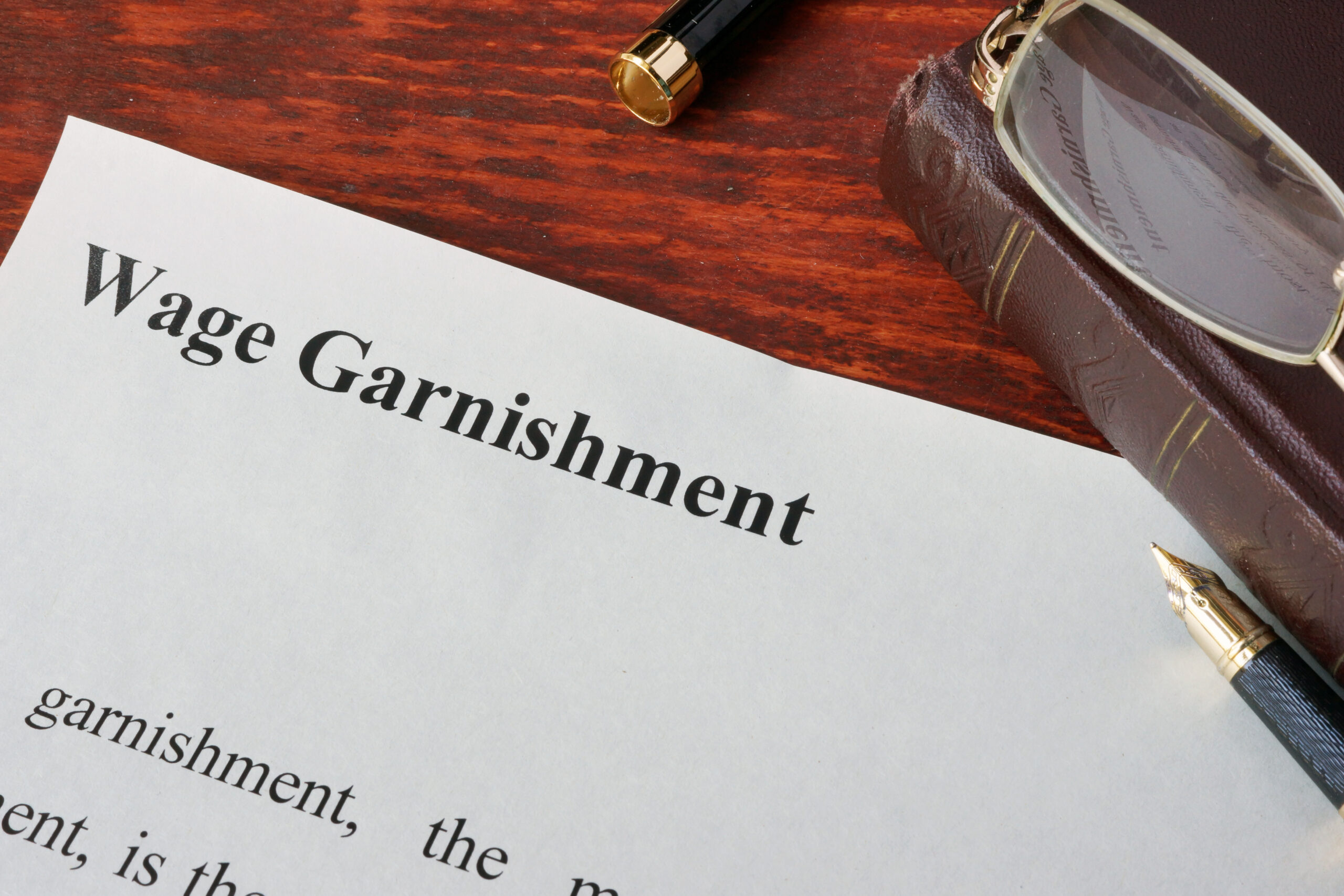Why the IRS Thinks You Underreported Income — And How to Fix It Before It Becomes a Bigger Problem
It’s not unusual for taxpayers across Connecticut to receive a letter from the IRS claiming they underreported income. It happens in Hartford, Stamford, Bridgeport, New Haven, Waterbury, Norwalk, Danbury, and in the smaller shoreline and inland towns as well. The letter may reference “income discrepancies,” a CP2000, or a proposed adjustment to your return. No matter the format, the message is the same: the IRS believes you earned more than you reported.
For most Connecticut residents, this feels confusing, stressful, and sometimes insulting. But the truth is that these notices are extremely common — especially in a state where people often have multiple income streams, complex payroll structures, investment portfolios, and high mobility between jobs. Many underreporting notices come from simple mismatches rather than actual errors.
Rappaport Tax Relief helps taxpayers across Connecticut resolve these notices and prevent escalation into liens, levies, or audits. Understanding why the IRS thinks you underreported is the first step toward correcting the issue effectively.
What the IRS Means by “Underreported Income”
When the IRS claims you underreported income, they aren’t necessarily accusing you of fraud. They are saying that the income on your tax return does not match the documents they have in their system — documents submitted by employers, contractors, payment processors, banks, staffing agencies, financial institutions, brokerages, or government benefit programs.
The IRS receives these forms automatically:
W-2s
1099-NECs
1099-MISCs
1099-Ks
1099-INT
1099-DIV
1099-R
1099-B
W-2Gs
Certain state-issued income forms
If even one of these is missing or reported differently from your return, the IRS system identifies the discrepancy.
In Connecticut, the issue often stems from the state’s mobility, high levels of professional employment, and mixed W-2/1099 income patterns.
Why Underreporting Notices Are So Common in Connecticut
Connecticut’s economic structure differs from many other states. It has a high concentration of:
Financial professionals
Healthcare workers
Insurance sector employees
Remote workers with out-of-state employers
Manufacturing and aerospace workers
Teachers and public-sector employees
Consultants and contractors
High-income households with investment activity
That diversity makes income reporting more complicated — and mismatches more likely.
Multiple job changes throughout the year
Many Connecticut taxpayers change roles, departments, or employers in the middle of a calendar year. When that happens, W-2s may be mailed to old addresses or sent digitally without the taxpayer noticing.
Out-of-state employers and remote work
Countless Connecticut residents work for companies based in New York, Massachusetts, California, or elsewhere. These employers sometimes issue forms with state coding errors, duplicate state lines, or multi-state W-2 complexities that lead to mismatches.
High concentration of investment accounts
Between Fairfield County, Hartford County, and shoreline communities, many residents hold:
Brokerage accounts
Mutual funds
Stock compensation plans
RSUs
ESPPs
Retirement distributions
When cost basis is missing or incorrect, the IRS assumes the entire sale amount is taxable.
Side income and consulting
Connecticut has a large number of professionals who pick up consulting, tutoring, contracting, design work, or seasonal income on the side. These gigs issue 1099s — often digital ones that taxpayers overlook.
Payment platform confusion
Venmo, PayPal, Zelle, and Cash App transactions sometimes trigger 1099-Ks, even when they involve personal transfers or sales of old items at a loss.
Union and public-sector payroll issues
Corrections, retroactive pay, and multi-department payroll shifts often cause mismatching W-2s.
Gambling wins
Connecticut residents who visit Mohegan Sun, Foxwoods, or nearby casinos in Rhode Island and New York may receive W-2Gs. Without documented losses, the IRS taxes the entire amount.
Family financial support
Transfers used to help aging parents, grown children, or relatives are common. The IRS software does not distinguish these from income unless clarified.
These patterns create fertile ground for underreporting notices — but also for successful corrections once reviewed by a professional.
The Notice Most People Receive: CP2000
The CP2000 outlines the income the IRS believes you earned, what you reported, and the proposed difference. It often lists a tax increase plus additional penalties and interest.
Despite how it looks, it is not a final bill. It is a proposal.
Many Connecticut taxpayers assume they must pay it. But more often than not, the IRS is working with incomplete or incorrect data.
Rappaport Tax Relief regularly reduces or eliminates CP2000 assessments by providing proper documentation.
Common Connecticut Scenarios That Trigger Underreporting Notices
A financial-sector employee receives multiple tax documents
Someone working in Stamford or Hartford may receive W-2s, RSU forms, stock sale statements, and corrected 1099s. Missing even one creates a mismatch.
A remote employee works for a company based in another state
Multi-state W-2 coding errors are common and easily misunderstood by IRS software.
A healthcare worker has multiple roles
Nurses, CNAs, and technicians often work for two or more facilities. A forgotten W-2 is one of the most common triggers.
A consultant or contractor receives unexpected 1099s
Short-term projects and side clients often issue 1099s months after work is completed.
A taxpayer sells personal items
A 1099-K for selling old furniture or electronics is misread as profit.
A retiree withdraws from multiple accounts
Pensions, IRAs, and 401(k)s may issue different statements, and a single mismatch leads to a notice.
A teacher receives a stipend or extra compensation
Grants, extracurricular pay, or one-time bonuses may generate additional forms.
A taxpayer supports multiple family members
Transfers can look like unreported business income when the IRS analyzes bank data.
These situations are common across the state — and fixing them is possible once the details are properly reviewed.
How Rappaport Tax Relief Fixes Underreporting Problems
Step 1: Pulling IRS transcripts
Rappaport retrieves your Wage & Income Transcript, revealing exactly what documents the IRS has on file. Often, taxpayers only discover a missing W-2 or unexpected 1099 when reviewing this transcript.
Step 2: Comparing IRS records with your actual documentation
The team reviews your W-2s, 1099s, investment statements, retirement distributions, and bank activity to determine what the IRS misinterpreted.
Step 3: Identifying non-income deposits
Connecticut residents often move money for family support, shared expenses, loan repayments, or personal transfers. These must be explained clearly to the IRS.
Step 4: Preparing corrections or an amended return
In some cases, the return needs to be updated. In others, the IRS’s assumption is wrong, and the issue is resolved by supplying documentation and explanation.
Step 5: Drafting a well-organized response
A clear, professionally structured response dramatically increases the chance of the IRS reducing or eliminating the proposed balance.
Step 6: Preventing escalation
If needed, Rappaport requests a collection hold to prevent the situation from becoming a lien, levy, or garnishment while the dispute is reviewed.
Why Responding on Your Own Can Make Things Worse
Many taxpayers unintentionally escalate the problem by:
Agreeing to IRS numbers they don’t actually owe
Sending too much information
Missing critical documentation
Making statements that open the door for deeper IRS review
Ignoring the notice until it becomes a bill
Handling the notice quickly and correctly is essential.
Final Thoughts
IRS underreporting notices are extremely common in Connecticut due to the state’s complex income structures. Multi-job households, investment activity, remote work arrangements, side gigs, and recurring payroll corrections all create situations the IRS’s automated system misinterprets.
The good news is that most underreporting issues are fixable with the right documentation and strategy.
Rappaport Tax Relief helps Connecticut taxpayers correct these notices, reduce inflated assessments, and prevent unnecessary IRS enforcement actions.
Why Connecticut Residents Are Seeing Larger Balances on IRS Notices
Connecticut taxpayers often receive IRS letters showing balances far higher than expected. These adjustments typically come from automated systems.
Multiple Income Streams
CT residents often have:
Remote work income
Commuter job income
Side income
Investment accounts
Any discrepancy triggers an IRS recalculation.
Incorrect Credits
Credits for children, education, and insurance are common sources of IRS corrections.
State-Level Changes
When Connecticut updates your state return, the IRS may use that data to adjust the federal return.
Rappaport Can Help
Rappaport Tax Relief reviews each notice, challenges incorrect figures, and negotiates directly with the IRS to protect clients from enforcement.
How to Stop an IRS Wage Garnishment Fast in Connecticut
IRS wage garnishments are among the most stressful financial events a person can face. In Connecticut — where housing, commuting, childcare, and medical expenses already consume most paychecks — losing 20–25% of your take-home pay can destabilize your household instantly.
The good news?
A wage garnishment can often be stopped — and sooner than most taxpayers expect.
Here’s what CT residents need to know.
How an IRS Wage Levy Starts
Before the IRS contacts your employer, they must send:
Multiple IRS notices
A final warning
And a Final Notice of Intent to Levy
Once that final notice expires:
The IRS can legally reach out to your employer
Your employer must comply
The next paycheck will be reduced significantly
There’s no court hearing. No judge. No lawsuit. It’s immediate.
Why Wage Levies Hit CT Households Extra Hard
Housing is expensive
Connecticut rents and mortgages exceed what the IRS considers “reasonable.”
Commuting costs are substantial
Metro-North passes, gas, parking, maintenance — all far above national norms.
Childcare is extremely costly
Daycare, after-school programs, summer camps — the IRS allowances don’t come close.
Medical and elder care expenses are high
CT has one of the oldest populations in the U.S.
Many families support multiple generations
IRS formulas rarely account for this unless documented.
These realities strengthen hardship arguments — but only with proper evidence.
Step One: Identify Who Controls the Levy
IRS levies may come from:
Automated Collection System (ACS)
Revenue Officers
IRS field offices
Each has different procedures and timelines.
Rappaport identifies the correct contact immediately — allowing the fastest path to relief.
Step Two: Stop the Levy Fast — Proven Approaches
1. Hardship Release
If the levy prevents you from paying for basic needs, the IRS can release it.
Key CT hardship costs include:
Rent or mortgage
Childcare
Commuting
Medical expenses
Food
Utilities
Insurance
2. Filing Missing Returns
Unfiled returns often trigger aggressive IRS action. Filing them reopens the account and can pause the levy.
3. Temporary Collection Hold
The IRS may pause enforcement while:
You gather documents
A representative builds your case
A long-term agreement is being prepared
4. Installment Agreement
A payment plan can replace the garnishment once approved.
5. Offer in Compromise Consideration
If eligible, the IRS may halt enforcement to review your settlement request.
6. Appeals
If the IRS violated procedure, the levy can be overturned.
What Documents the IRS Needs to Release a Levy
Typically:
Pay stubs
Bank statements
Rent or mortgage statements
Utilities
Insurance premiums
Car loan details
Childcare invoices
Medical bills
Proof of dependents
Rappaport organizes this information into IRS-friendly formats.
Why Levy Releases Often Happen Faster in CT
Connecticut households frequently exceed IRS cost assumptions — especially for:
Housing
Commuting
Medical costs
Childcare
Food
Insurance
Once Rappaport demonstrates this mismatch clearly, many levies can be released quickly.
After the Levy Is Released: Long-Term Protection
Stopping the levy is only Phase 1.
Phase 2 is designing a stable, permanent solution to prevent future enforcement:
OIC
CNC
Partial-pay plan
Full installment agreement
Penalty removal
Audit reconsideration
Rappaport ensures the IRS does not restart enforcement later.
Final Thought
A wage garnishment feels like a crisis because it is.
But it is also reversible — and often faster than people expect.
Rappaport Tax Relief helps Connecticut taxpayers stop garnishments quickly and rebuild long-term financial stability.
Can You Really Settle IRS Tax Debt for Less Than You Owe? A Connecticut Taxpayer’s Guide to the Truth
IRS tax problems are more common in Connecticut than most people realize — not because people are reckless, but because the financial landscape here is unpredictable.
High housing costs, inconsistent contract work, medical expenses, layoffs, shifting industries, and unexpected 1099 income all combine to create tax debt unbelievably fast.
Then the IRS notices arrive.
Then the penalties compound.
Then the debt becomes bigger than what most families can realistically manage.
That’s when people type the same question into Google:
“Is it actually possible to settle my IRS debt for less than I owe?”
Yes — but only under circumstances that the IRS considers genuine hardship.
This guide explains how IRS settlements really work for Connecticut taxpayers, and how Rappaport Tax Relief helps people qualify.
There Is Only One Real IRS Settlement Program
Television ads oversell it. Radio ads oversimplify it.
But there is a real program that allows taxpayers to settle their balance for less. It’s called the:
Offer in Compromise (OIC)
An OIC isn’t about negotiation.
It is not about bargaining.
There is no “name your price.”
The IRS applies a strict formula called:
Reasonable Collection Potential (RCP)
= What the IRS believes it could collect from you over time
If RCP is lower than your total debt → settlement may be possible.
If RCP is equal or higher → the IRS will expect full payment or another resolution method.
Understanding how RCP works is the key to whether an OIC is worth pursuing.
Why Connecticut Taxpayers Often Make Strong Settlement Candidates
The IRS’s national “allowable expense standards” don’t match reality in Connecticut.
1. Housing costs exceed national norms
Fairfield County, Stamford, Norwalk, Westport, Danbury, and parts of Hartford and New Haven have housing costs far above IRS allowances.
2. Commuting costs are uniquely high
Metro-North, gas prices, parking, tolls — they all inflate monthly expenses.
3. Many taxpayers have variable income
Connecticut is full of:
Contractors
IT professionals
Consultants
Healthcare workers
Self-employed tradespeople
Income fluctuates dramatically in these sectors.
4. Elder care and medical expenses are widespread
CT has an older-than-average population and high medical costs.
5. Dual-income families shift to single-income households after divorce
Two homes. Two sets of bills. Two childcare setups.
6. Student loan burdens
IRS charts don’t fully account for the size and impact of student loan payments in CT.
When documented correctly, these realities help show the IRS why a taxpayer cannot pay the full balance.
How the IRS Calculates Eligibility
The IRS examines two main components:
1. Future income
They review:
Net monthly income
Average bank deposits
Self-employment swings
Seasonal earning patterns
Spousal income
Family size
Childcare and dependents
Medical needs
Then they apply “allowable expense” subtractions — but in Connecticut, those allowable numbers need to be expanded with documentation to reflect real living costs.
2. Equity in assets
The IRS reviews:
Home equity
Vehicle equity
Retirement accounts
Investments
Cash value insurance
Business equipment
Homeowners in CT often worry about equity — but IRS equity isn’t always full market value.
There are discounts, limitations, shared ownerships, refinancing barriers, and community-specific adjustments.
Who in Connecticut Often Qualifies for an OIC?
Retirees or near-retirees
Fixed income and limited earning potential create strong OIC cases.
Self-employed workers
Contractors, stylists, barbers, mechanics, IT consultants, and tradespeople often have income dips the IRS must consider.
Single parents
Childcare costs in CT frequently exceed IRS expectations.
Families with medical expenses or caring for elderly parents
These expenses, when documented, shift RCP significantly.
Taxpayers whose income decreased after the tax was assessed
A strong year followed by two weak years is a textbook OIC scenario.
When an OIC Isn’t the Best Approach
Not everyone is a settlement candidate. Fortunately, the IRS has alternatives:
Partial-pay installment agreements
Penalty abatement
Currently Not Collectible (CNC)
Full installment agreements
Appeals and audit reconsiderations
State-specific relief (CT DRS programs)
Rappaport Tax Relief always runs your RCP numbers first — before filing anything — to determine whether an OIC is worth the time.
What a Strong Connecticut OIC Package Looks Like
A successful OIC includes:
A complete, precise financial statement
Three–six months of bank statements
Proof of childcare, medical, commuting, and housing expenses
Correct valuation of assets
Documentation of income instability
A narrative explaining why CT economics exceed IRS standards
A clean filing history
Consistent numbers across every form
Weak OIC packages are denied not because the taxpayer doesn’t qualify — but because the IRS wasn’t given enough clarity.
Why Rappaport Tax Relief Succeeds Where National Firms Fail
Connecticut has unique cost patterns and regional pressures.
Rappaport understands:
Fairfield County cost-of-living
Metro-North commuting
Student loan burdens
High medical insurance premiums
High childcare and after-school costs
Property tax variations
How IRS reviewers treat Connecticut cases
This local knowledge dramatically increases the strength of an OIC submission.
Final Thought
Yes — IRS settlements are real.
But they only work when your financial story is carefully prepared and clearly documented.
Rappaport Tax Relief helps Connecticut taxpayers make informed decisions and build settlement packages that resonate with the IRS — increasing the odds of meaningful relief.
Unfiled Tax Returns in Connecticut — How Serious Is It?
If you’ve missed one or more tax filings, you might worry that it’s too late to fix. The truth? You’re not alone — and with the right help, it’s never too late to make things right with the IRS.
What Happens When You Don’t File
If you don’t file, the IRS will eventually file a Substitute for Return (SFR) for you, based only on your reported income. Because it excludes deductions and credits, it usually shows a much higher balance than what you actually owe.
Once that happens, the IRS can issue liens, garnish wages, or seize refunds.
Why You Should File Voluntarily
Filing voluntarily gives you the advantage. It allows you to:
Reclaim deductions and credits you’re entitled to
Qualify for payment or settlement options
Avoid or reduce penalties
How Rappaport Tax Relief Can Help
At Rappaport Tax Relief, we help Connecticut taxpayers file old returns, correct IRS records, and negotiate fair resolutions. You’ll work directly with a trusted professional who knows how to simplify the process and protect your best interests.
If you’re behind on taxes, take the first step toward peace of mind.
How Long the IRS Can Collect Back Taxes — The 10-Year Limit Explained
If you’ve been dealing with tax debt for years, you may be closer to the finish line than you think. By law, the IRS generally has 10 years from the date your taxes are assessed to collect. This time frame is known as the Collection Statute Expiration Date (CSED).
When the 10-Year Clock Starts
The clock starts when the IRS officially records your tax liability — usually after you file your return, or when the IRS files one on your behalf. Once 10 years pass, the debt becomes legally uncollectible.
What Stops or Extends the Time Limit
Some actions temporarily pause the countdown, including:
Filing for bankruptcy
Submitting an Offer in Compromise
Living abroad
Requesting Innocent Spouse Relief
Having an open appeal or hearing
When those situations end, the clock resumes.
Why This Rule Matters
Understanding your CSED helps you and your tax professional decide the best strategy — whether that means negotiating a settlement or allowing the statute to expire.
At Rappaport Tax Relief, we review IRS transcripts, determine your true CSED dates, and help Connecticut taxpayers plan their path to financial freedom.
Connecticut IRS Debt Resolution in October 2025
Seasonal Pressure in Connecticut
When autumn hits New England, the IRS collection calendar hits full stride. October 15 filings are logged, penalties assessed, and balance-due notices dispatched. For many Connecticut residents—especially those with high W-2 income, consulting work, or investment gains—these notices arrive as year-end expenses mount.
Why People Fall Behind
Bonuses and RSUs generate surprise tax liabilities. Others underestimate quarterly payments. Once a CP14 is issued, interest compounds daily. By late October, the balance may already include months of penalties.
How Rappaport Tax Relief Intervenes
We analyze your IRS account transcripts to confirm every posting and penalty calculation. Missing filings are corrected, then we present a hardship-backed financial statement supporting an affordable resolution—Installment Agreement, OIC, or currently-not-collectible status.
Professional Representation Matters
The IRS assigns Connecticut cases to regional offices that expect detailed documentation. Our team’s meticulous approach prevents rejections that prolong stress. You get transparent communication and precise filings, not automated templates.
October Opportunity
Addressing your case now prevents lien filings that could appear on 2026 credit reports. Acting before Thanksgiving keeps you eligible for first-quarter payment plans instead of spring enforcement.
Call today for a free consultation with our experienced team. We’ll review your case, explain your options, and start working toward the best possible outcome.
IRS Wage Garnishment in Connecticut — What You Can Do About It
When the IRS starts taking money directly from your paycheck, it can quickly become overwhelming. The good news? You don’t have to face it alone — and with the right help, you can often stop a garnishment before your next payday.
What Is an IRS Wage Garnishment?
A wage garnishment (or levy) allows the IRS to collect unpaid taxes by requiring your employer to send a portion of your wages directly to them. This usually happens after the IRS has sent multiple warnings, including a Final Notice of Intent to Levy.
Once it begins, it continues until your balance is paid or the IRS approves another arrangement.
How to Stop Wage Garnishment
You have several ways to stop a wage garnishment:
Set Up a Payment Plan. A negotiated installment agreement can pause collection.
Apply for Hardship Status. If you can’t pay without severe financial strain, the IRS can stop enforcement.
Submit an Offer in Compromise. Settle for less than you owe if you qualify.
File an Appeal. Challenge improper or excessive collection action.
How Rappaport Tax Relief Helps
At Rappaport Tax Relief, we work directly with the IRS to stop garnishments, protect your income, and negotiate solutions that fit your financial situation. We’ve helped countless Connecticut taxpayers regain control and peace of mind.
10 Benefits of Letting a Professional Negotiate With the IRS in Connecticut
Connecticut Taxpayers Need an Advocate
IRS debt is more than just numbers — it’s stress, fear, and the risk of losing what you’ve worked for. Once penalties start adding up, the IRS moves quickly with garnishments, liens, and levies.
At Rappaport Tax Relief, we’ve built our practice on defending Connecticut taxpayers. Here’s why professional help makes the difference.
1. Knowledge of Federal and State Tax Laws
Connecticut residents often face state tax issues on top of IRS problems. An expert who understands both ensures nothing slips through the cracks.
2. Stopping Collections
IRS levies and garnishments can devastate your finances. Professionals know how to stop or release these actions.
3. Negotiating Fair Settlements
Experts present your case strategically to secure affordable payment terms or reduced balances.
4. Requesting Penalty Relief
Late filing and underpayment penalties can be reduced or removed if handled correctly.
5. Support During Audits
IRS audits are stressful. A debt relief expert ensures you’re prepared and represented throughout.
6. Protecting Assets
Professionals know how to safeguard your bank accounts, wages, and property.
7. Ensuring Accurate Filing
Errors increase debt. Experts keep filings clean, correct, and strategic.
8. Handling Unfiled Returns
Years of unfiled returns make debt worse. A professional brings your record current without triggering unnecessary penalties.
IRS Bank Levies Explained: 2025 Relief Strategies
Knowing someone is fighting for you allows you to sleep at night and focus on your life.
10. A Path Forward
The ultimate goal is financial freedom and a fresh start.
Why Work With Rappaport
David Rappaport combines years of experience with personal dedication. Clients trust his commitment and results.
Call Today
Don’t let IRS problems grow worse. Call Rappaport Tax Relief today and get the ally you need.
IRS Notices Explained: What to Do When You Receive a CP501 or CP504
When the IRS Comes Knocking
For taxpayers in Connecticut, nothing creates anxiety quite like an IRS notice. The CP501 and CP504 are among the most common — and they escalate quickly if ignored.
CP501: The First Reminder
This is often the IRS’s initial contact about your unpaid balance. It outlines how much you owe, due dates, and basic payment instructions. While it may seem mild, ignoring it will trigger harsher action.
CP504: The Final Notice
The CP504 is far more serious. It’s a Notice of Intent to Levy — meaning the IRS can seize your state refund and move toward other assets if you don’t act.
Consequences of Ignoring Notices
Liens on your home or property.
Garnishment of your wages.
Seizure of bank accounts.
Steps to Take Immediately
Don’t panic, but don’t ignore it.
Read the deadlines carefully.
Explore payment options like installment agreements, Offers in Compromise, or hardship status.
Get professional help to avoid costly mistakes.
Why It Matters in Connecticut
With high living costs and property values, liens or levies can devastate households. Waiting until garnishment begins leaves you with little leverage.
Rappaport Tax Relief helps Connecticut taxpayers respond to IRS notices before they escalate. Call today for a free consultation.







